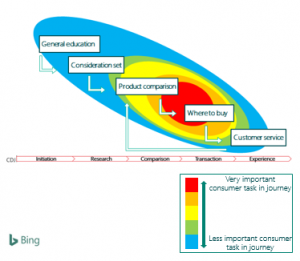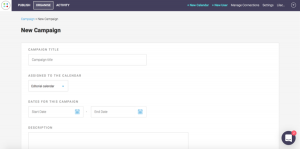If you are a banker, you must have heard about the LIBOR transition to RFR and why the Financial Conduct Authority (FCA) who is responsible for LIBOR regulation wants to phase out Libor by the end of the year 2021. But, what LIBOR is and why is there a need for its transition to RFR?
In today’s blog, we will learn what LIBOR and RFR are, including the reason why such a transition is happening in the first place. So let’s get started.
What is LIBOR?
London InterBank Offer Rate (LIBOR) is the main interest rate benchmark that is used in the financial markets. Put simply, it is an interest rate average that is calculated from rate estimates submitted by leading banks in London. Each bank estimates the rate it would be charged while borrowing from other banks. The resulting average rate is abbreviated as ICE LIBOR (Intercontinental Exchange Libor) instead of BBA LIBOR (British Bankers’ Association Libor) after administration was assigned to Intercontinental Exchange in 2008.
LIBOR is calculated for five currencies – USD, Euros, Yen, Swiss Franc, and GBP (Pounds) and seven borrowing tenures ranging from overnight, 1 week, 1 month, 2 months, 3 months, 6 months and 12 months.
What is RFR?
RFR or Risk-Free Interest Rate is the theoretical rate of return on investment at zero risk. RFRs have been developed on a country by country basis. RFRs are radically different from LIBORs or IBORs. Unlike LIBOR, RFRs do not have a tenure element, have the robustness to change according to market conditions, are based on reliable and sufficient market data, are subject to controls and governance, and reflect actual funding rates of the market.
The above difference leads to a credit and liquidity spread or pricing gap between LIBORs and RFRs. The gap is constructed by taking a LIBOR/IBOR for a particular tenure and subtracting the fixed rate of overnight indexed swap (OIS) of the same tenure from it.
NOTE: OIS is a fixed-floating interest rate, where the floating rate is based on daily compounded interest rate investment calculated return. While index rate is the rate of overnight unsecured lending among banks.
The OIS rate is considered to be a good proxy for a term risk-free rate due to less credit risk associated with it and hence less risky than LIBOR.
There are multiple RFRs identified by various groups. Some of them are SONIA (Sterling Overnight Indexed Average) by the Bank of England, SOFR (Secured Overnight Financing Rate) by the Alternative Reference Rates Committee of US, ESTER (Euro Short Term Rate) by the European Central Bank, TONA (Tokyo Overnight Average Rate) by Japan, and SARON (Swiss Average Rate Overnight) by the Swiss National Bank.
| CURRENT INTEREST RATE | PROPOSED ALTERNATIVE RFR | RFR ADMINISTRATOR | SECURED OR UNSECURED | WORKING GROUP |
| Sterling LIBOR | Sterling Overnight Index Average (SONIA) | Bank of England (BoE) | Unsecured | Working Group on Sterling Risk-Free Rates |
| US dollar LIBOR | Secured Overnight Financing Rate (SOFR) | Federal Reserve Bank of New York | Secured | Alternative Reference Rates Committee |
| Swiss franc LIBOR | Swiss Average Rate Overnight (SARON) | SIX Swiss Exchange | Secured | Swiss National Working Group |
| Japanese yen LIBOR | Tokyo Overnight Average Rate (TONAR) | Bank of Japan | Unsecured | Cross-Industry Committee on Japanese Yen Interest Rate Benchmarks |
| Euro LIBOR/EONIA | Euro Short-Term Rate (€STR) | European Central Bank (ECB) | Unsecured | Working Group on Euro Risk-Free Rates |
Why FCA Wants LIBOR To Phase Out?
One of the major reasons to phase out LIBOR is its scandal of 2012. The LIBOR Scandal was a highly publicized scheme where bankers from major financial institutions conspired with one another to manipulate the LIBOR for their benefit, commencing distrust in the financial industry that led to numerous fines, regulatory actions and lawsuits. Although the scandal came to light in the year 2012, there was evidence of conspiracy being proceeding since 2003.
That’s why, the basis of LIBOR “interbank unsecured term borrowing” has been significantly reduced in volume, stirring questions of its ability to continue the central role play.
Therefore, at the beginning of March 2021, we saw an official LIBOR discontinuation announcement from the Financial Conduct Authority signifying the imminent end of LIBOR that will change the core banking systems. The future cessation announced by FCA are:
Immediately After 31 Dec 2021
- Disclosure of all 7 Swiss Franc LIBOR settings, 7 Euro LIBOR settings, the Spot Next, 1-week, 2-month and 12-month Japanese yen LIBOR settings, the 1-week and 2-month US dollar LIBOR settings, and the sterling LIBOR settings for overnight, 1-week, 2-month and 12-month will be ceased.
Immediately After 03 June 2023
- Disclosure of 12-month and overnight US dollar LIBOR settings will be ceased.
- USD LIBOR Settings for 1-month, 3-month and 6-month will also be ceased on a representative basis.
Conclusion
After LIBOR, other regulatory bodies around the globe have followed suit and started evaluating the status of their Interbank Offer Rates (IBORs). The future of banking would now depend on the transition to RFR as banks have to align themselves with the regulatory requirements and expectations, i.e., banks will also cease the participation in LIBOR and hence move to RFR.
Business & Finance Articles on Business 2 Community(28)







